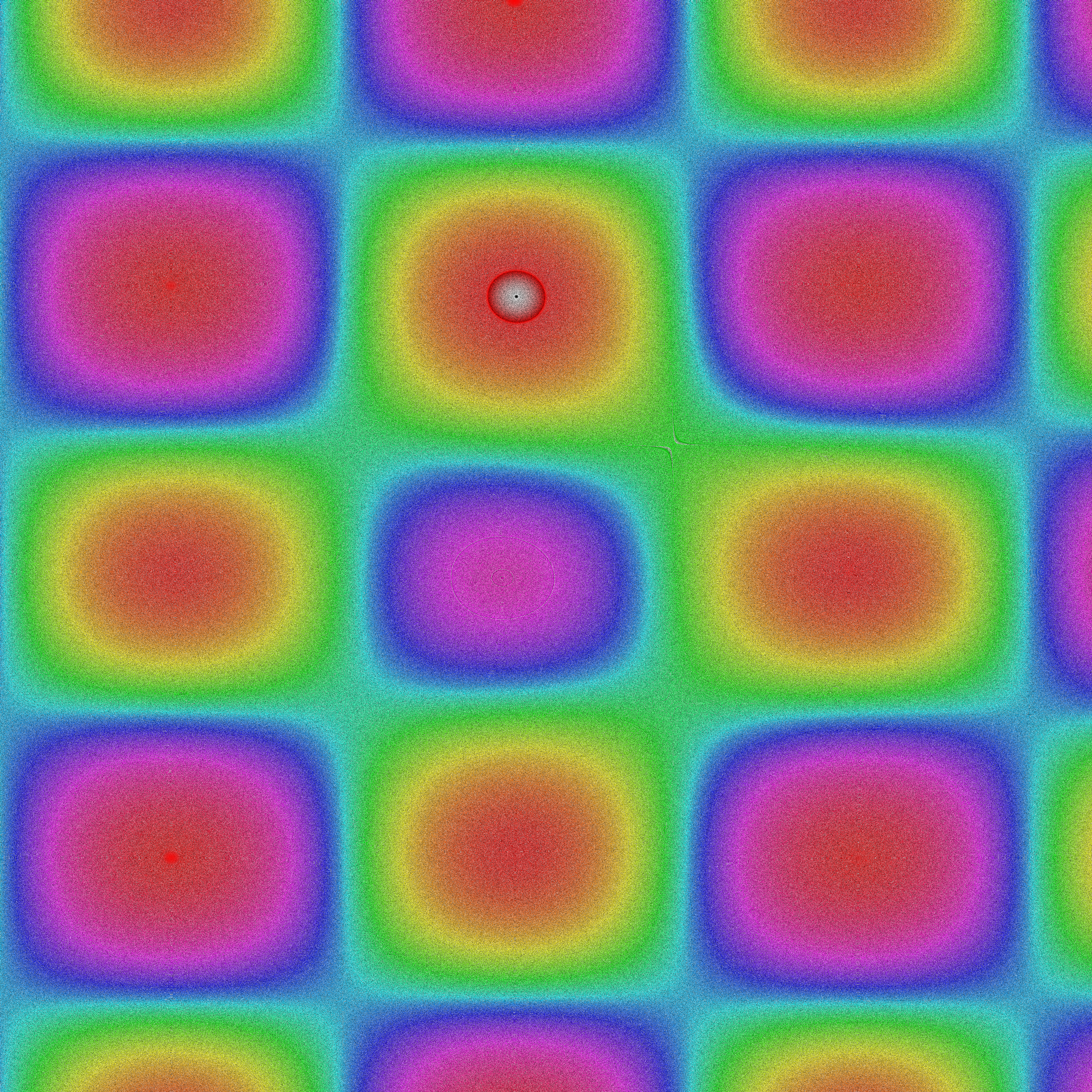


I’m not a physicist or mathematician by any stretch of the imagination, but I always enjoy watching lectures of Nima Arkani-Hamed on things like qft online. One concept he works on that I find particularly fascinating (although I won’t claim to understand it) is the amplituhedron, so I asked Chatgpt to visualize it in 24-bit rgb.
As you can read in one of the code comments, the script uses a placeholder curve for the amplituhedron evaluation (more on that in a later entry). However, the resulting image was interesting and pretty, and frankly, that’s enough reason to publish it here.
import numpy as np from PIL import Image from matplotlib.colors import rgb_to_hsv from hilbertcurve.hilbertcurve import HilbertCurve # 1) Parameters W = H = 4096 N = W * H γ = 0.6 # gamma for midtone boost (0<γ<1) alpha = 1e-6 # weight for spatial locality # 2) Your amplituhedron “height” function on [0,1]^2 def amplituhedron_value(u, v): # —REPLACE— with a true amplituhedron evaluation return np.sin(10*u)*np.cos(12*v) + 0.5*np.exp(-((u-0.5)**2 + (v-0.5)**2)*30) # 3) Sample the field ys = np.linspace(0, 1, H) xs = np.linspace(0, 1, W) U, V = np.meshgrid(xs, ys) F = amplituhedron_value(U, V).ravel() # 4) Normalize + gamma-correct Fmin, Fmax = F.min(), F.max() Fnorm = (F - Fmin) / (Fmax - Fmin) Fγ = Fnorm ** γ # 5) Compute 2D Hilbert indices for pixels hc2 = HilbertCurve(p=12, n=2) # 2^12 = 4096 # build list of integer (x,y) pairs coords2d = np.column_stack(( np.floor(U.ravel() * (W-1)).astype(int), np.floor(V.ravel() * (H-1)).astype(int), )) # use distances_from_points to get all distances at once hil2 = np.array( hc2.distances_from_points(coords2d.tolist()), dtype=float ) hil2 /= (N - 1) # normalize to [0,1] # 6) Composite score and pixel ordering composite = Fγ + alpha * hil2 pixel_order = np.argsort(-composite, kind='mergesort') # 7) Build the full 24-bit palette all_idxs = np.arange(256**3, dtype=np.uint32) palette = np.empty((all_idxs.size, 3), dtype=np.uint8) palette[:,0] = (all_idxs >> 16) & 0xFF palette[:,1] = (all_idxs >> 8) & 0xFF palette[:,2] = all_idxs & 0xFF # 8) Sort palette by HSV for a rainbow sweep hsv = rgb_to_hsv(palette.astype(float) / 255.0) color_order = np.lexsort((hsv[:,2], hsv[:,1], hsv[:,0])) # H→S→V # 9) Map each pixel to its unique color img_flat = np.empty((N, 3), dtype=np.uint8) img_flat[pixel_order] = palette[color_order] # 10) Reshape and save img = img_flat.reshape((H, W, 3)) Image.fromarray(img).save('amplituhedron_visually_enhanced.png') print("Done! Saved as amplituhedron_visually_enhanced.png")
| Date | |
|---|---|
| Colors | 16,777,216 |
| Pixels | 16,777,216 |
| Dimensions | 4,096 × 4,096 |
| Bytes | 49,828,290 |
